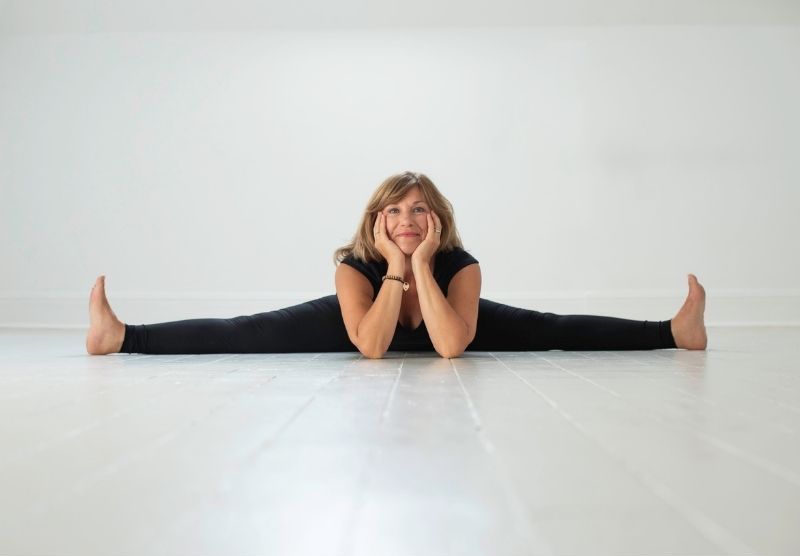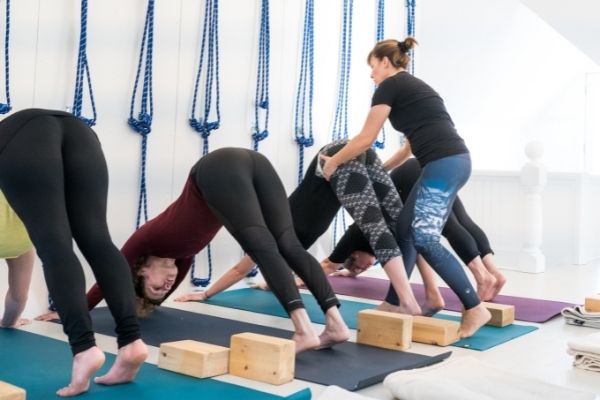The Effect of Iyengar Yoga: Nurturing the Body, Mind, and Soul
Last weekend I taught a weekend workshop at a beautiful, secluded retreat centre not far from where I live. The students that register for this type of retreat do so through the centre and so I rarely know who is going to attend. For the most part, they are new to Iyengar yoga and some have only experienced yoga through practicing via YouTube videos online. It always lights me up to see how profound this practice can be for someone who hasn’t experienced it yet.
Over the course of the weekend there are plenty of opportunities for questions and answers. At one point the question of how physical practice, asanas, work on the organic body. I must have mentioned some deeper than physical holistic benefits of a few poses we were in and this gave rise to the question in the student’s mind. I appreciated the question and the opportunity to respond, “they absolutely do!”
In the sacred space of the yoga mat, where you are connected with yourself, absorbed in the asana, where your breath is synchronized to the actions you are taking, you will inevitably experience practice as something that transcends mere physical movements. It’s a journey that extends far beyond the realm of muscle and bone, reaching deep into the intricate web of our organic body and the subtle layers of our being. When we are practicing yoga, truly absorbed in practice, there is a profound interplay between the physical, mental, and emotional aspects of our being.
When BKS Iyengar wrote Yoga, The Path to Holistic Health he underscored how each asana can become a gateway to holistic well-being.
“The strain of modern life can lead to physical pain and illness, as our bodies’ well being is neglected in the race for material success. The stress of modern life can also lead to mental suffering like feelings of inadequacy, isolation, or powerlessness. Yoga helps integrate the mental and the physical plane, and it offers a sense of inner and outer balance, or alignment. True alignment means that the inner mind reaches every cell and fiber of the body.”
“By attending to the mental and spiritual side of yoga, a sincere student becomes like a smoothly flowing river, irrigating and fertilizing the land around it. Just as one cannot dip into the same river twice, so each and every asana refreshes your life force with new energy each time you practice it.”
The Physical Body: Our Way Into Ourselves
On the surface the practice of yoga may appear to be quite physical. Especially in alignment or symmetry based practices like Iyengar yoga. It’s true that we undertake a meticulous study in alignment and precision. The reason for this is the physical body is our way in. When our physical body is in pain, discomfort and out of synch how can the mind settle? How can we calm the incessant fluctuations of the mind when the body is sore, tight, compressed? We can’t because the mind will always be drawn towards the discomfort we are feeling in our physical form. Therefore, the body is our way in towards stilling the fluctuations (vrittis) of the consciousness (chitta).
Practicing yoga will absolutely create flexibility where there is rigidity and strength where there is dormancy. As our practice goes deeper, however, we start to understand that these are the more superficial benefits of practice and that beneath all of the asana work lies a profound impact on our organic body.
As we move through the practice, twisting and bending, stretching and strengthening, we necessarily stimulate the organs within. The compression and release massage the digestive organs, promoting increased circulation, improved respiratory functioning and a balancing of the nervous system so that through physical practice the organic body can move towards optimal function.
The Breath: A Barometer of How Things are Going
In asanas, the breath is the silent conductor, orchestrating the symphony of movement and action. With each inhale, we expand into the space around us, inviting fresh prana to infuse us on a cellular level. With each exhale, we release tension stored within.
The breath is like a constant companion. Even when we totally forget about it as soon as we draw our attention back, it’s right there. Learning to check in with the breath as we practice, both physically demanding and more restorative asanas, is an important way of checking in with ourselves to see how we are truly doing. Things may look fine and good on the outside but if the breath is agitated, being held or strained in any way, the true benefits of the asana can be easily lost.
The Mind and Emotions: A Step Towards Equilibrium
As the body finds its alignment and the breath flows effortlessly, the mind begins to quieten. In Iyengar yoga, BKS Iyengar famously stated that each asana should become a meditation in action, a path towards learning to live in the present moment. Through the practice of asanas, with focused awareness, we observe the fluctuations of the mind, cultivating a state of calm amidst the seemingly never ending modulations of the mind.
In the sacred space of the yoga mat, where body, breath, and mind unite, our yoga practice can become a transformative journey of self-discovery and self-realization. As we nurture the physical body, we awaken the dormant energies within, paving the way for healing and wholeness in every aspect of our being. If you haven’t had a chance to read Yoga, The Path to Holistic Health I highly recommend. It’s extremely empowering and insightful. It truly does put your health and well being into your own hands. If you have this book, pick it up and flip through the pages, see if you can find some inspiration to address whatever condition you may have and know that when you are working on one aspect of practice the others will necessarily rise to the surface.
“Relaxation begins from the outer layer of the body and penetrates the deep layers of our existence. Detail and precision of the body lead to mastery of the art of relaxation.”
BKS Iyengar




